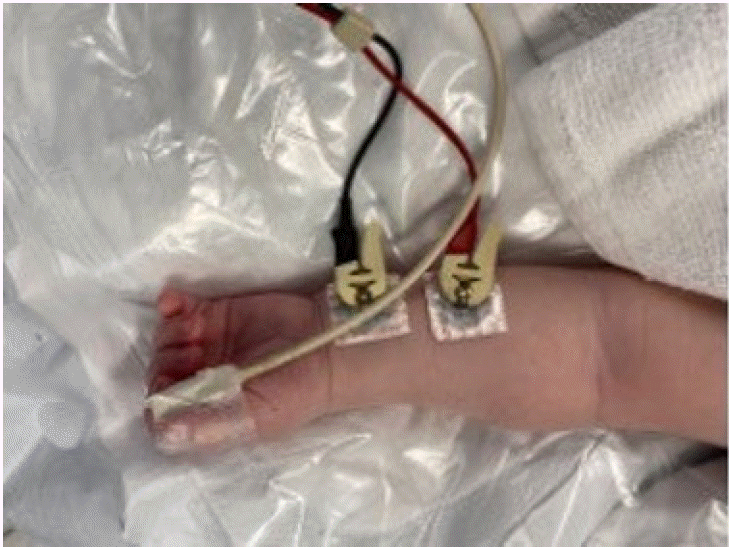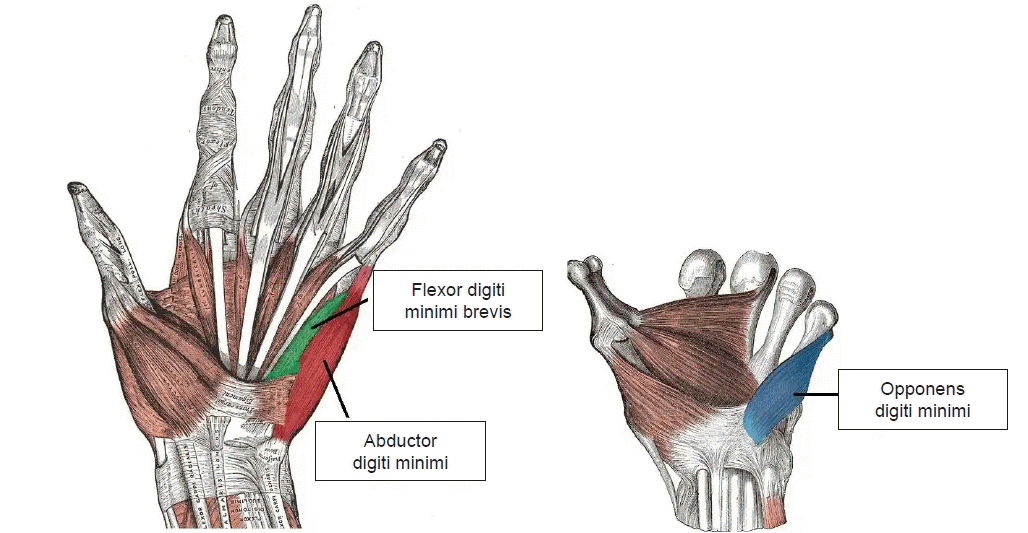1. Duţu M, Ivaşcu R, Tudorache O, Morlova D, Stanca A, Negoiţă S, et al. Neuromuscular monitoring: an update. Rom J Anaesth Intensive Care. 2018; 25:55–60.
2. Klucka J, Kosinova M, Krikava I, Stoudek R, Toukalkova M, Stourac P. Residual neuromuscular block in paediatric anaesthesia. Br J Anaesth. 2019; 122:e1–2.

3. Cammu G, De Witte J, De Veylder J, Byttebier G, Vandeput D, Foubert L, et al. Postoperative residual paralysis in outpatients versus inpatients. Anesth Analg. 2006; 102:426–9.

4. Rodney G, Raju P, Brull SJ. Neuromuscular block management: evidence-based principles and practice. BJA Edu. 2024; 24:13–22.

5. Fuchs-Buder T, Brull SJ, Fagerlund MJ, Renew JR, Cammu G, Murphy GS, et al. Good clinical research practice (GCRP) in pharmacodynamic studies of neuromuscular blocking agents III: The 2023 Geneva revision. Acta Anaesthesiol Scand. 2023; 67:994–1017.

6. Scheffenbichler FT, Rudolph MI, Friedrich S, Althoff FC, Xu X, Spicer AC, et al. Effects of high neuromuscular blocking agent dose on post-operative respiratory complications in infants and children. Acta Anaesthesiol Scand. 2020; 64:156–67.

7. Raval AD, Uyei J, Karabis A, Bash LD, Brull SJ. Incidence of residual neuromuscular blockade and use of neuromuscular blocking agents with or without antagonists: A systematic review and meta-analysis of randomized controlled trials. J Clin Anesth. 2020; 64:109818.

8. Carvalho H, Verdonck M, Cools W, Geerts L, Forget P, Poelaert J. Forty years of neuromuscular monitoring and postoperative residual curarisation: A meta-analysis and evaluation of confidence in network meta-analysis. Br J Anaesth. 2020; 125:466–82.

9. Thilen SR, Weigel WA, Todd MM, Dutton RP, Lien CA, Grant SA, et al. 2023 American Society of Anesthesiologists practice guidelines for monitoring and antagonism of neuromuscular blockade: a report by the American Society of Anesthesiologists task force on neuromuscular blockade. Anesthesiology. 2023; 138:13–41.

10. Yang L, Yang D, Liu C, Zuo Y. Application of neuromuscular monitoring in pediatric anesthesia: a survey in China. J Perianesth Nurs. 2020; 35:658–60.e1.
11. Vanlinthout LE, Geniets B, Driessen JJ, Saldien V, Lapré R, Berghmans J, et al. Neuromuscular-blocking agents for tracheal intubation in pediatric patients (0-12 years): a systematic review and meta-analysis. Pediatr Anesth. 2020; 30:401–14.

12. Naguib M, Brull SJ, Johnson KB. Conceptual and technical insights into the basis of neuromuscular monitoring. Anaesthesia. 2017; 72 Suppl 1:16–37.

13. Murphy GS. Neuromuscular monitoring in the perioperative period. Anesth Analg. 2018; 126:464–8.

14. Kopman AF, Yee PS, Neuman GG. Relationship of the train-of-four fade ratio to clinical signs and symptoms of residual paralysis in awake volunteers. Anesthesiology. 1997; 86:765–71.

15. Eikermann M, Groeben H, Hüsing J, Peters J. Accelerometry of adductor pollicis muscle predicts recovery of respiratory function from neuromuscular blockade. Anesthesiology. 2003; 98:1333–7.
16. Eriksson LI, Sundman E, Olsson R, Nilsson L, Witt H, Ekberg O, et al. Functional assessment of the pharynx at rest and during swallowing in partially paralyzed humans: simultaneous videomanometry and mechanomyography of awake human volunteers. Anesthesiology. 1997; 87:1035–43.
17. Brull SJ, Kopman AF. Current status of neuromuscular reversal and monitoring: Challenges and opportunities. Anesthesiology. 2017; 126:173–90.
18. Viby-Mogensen J, Claudius C. Evidence-based management of neuromuscular block. Anesth Analg. 2010; 111:1–2.

19. Carter JA, Arnold R, Yate PM, Flynn PJ. Assessment of the Datex Relaxograph during anesthesia and atracurium induced neuromuscular blockade. Br J Anaesth. 1986; 58:1447–52.
20. Jensen E, Viby-Mogensen J, Bang U. The accelograph: a new neuromuscular transmission monitor. Acta Anaesthesiol Scand. 1988; 32:49–52.

21. Motamed C, Kirov K, Combes X, Duvaldestin P. Comparison between the Datex-Ohmeda M-NMT module and a force-displacement transducer for monitoring neuromuscular blockade. Eur J Anaesthesiol. 2003; 20:467–9.

22. Bowdle A, Bussey L, Michaelsen K, Jelacic S, Nair B, Togashi K, et al. Counting train-of-four twitch response: Comparison of palpation to mechanomyography, acceleromyography, and electromyography. Br J Anaesth. 2020; 124:712–7.

23. Todd MM, Hindman BJ, King BJ. The implementation of quantitative electromyographic neuromuscular monitoring in an academic anesthesia department. Anesth Analg. 2014; 119:323–31.

24. Bowdle A, Bussey L, Michaelsen K, Jelacic S, Nair B, Togashi K, et al. A comparison of a prototype electromyograph vs. a mechanomyograph and an acceleromyograph for assessment of neuromuscular blockade. Anaesthesia. 2020; 75:187–95.

25. Nemes R, Lengyel S, Nagy G, Hampton DR, Gray M, Renew JR, et al. Ipsilateral and simultaneous comparison of responses from acceleromyography and electromyography-based neuromuscular monitors. Anesthesiology. 2021; 135:597–611.

26. Driessen JJ, Robertson EN, Booij LHD. Acceleromyography in neonates and small infants: Baseline calibration and recovery of the responses after neuromuscular blockade with rocuronium. Eur J Anaesth. 2005; 22:11–5.

27. Espinal LM, Kalsotra S, Rice-Weimer J, Kitio SA, Tobias JD. Tolerance to preoperative placement of electrodes for neuromuscular monitoring using the Tetragraph™. Saudi J Anaesth. 2024; 18:205–10.

28. Renew JR, Hernandez‑Torres V, Logvinov I, Nemes R, Nagy G, Li Z, et al. Comparison of the TetraGraph and TOFscan for monitoring recovery from neuromuscular blockade in the post‑anesthesia care unit. J Clin Anesth. 2021; 71:110234.
29. Kalsotra S, Rice-Weimer J, Tobias JD. Intraoperative electromyographic monitoring in children using a novel pediatric sensor. Saudi J Anaesth. 2023; 17:378–82.

30. Goudsouzian NG. Maturation of neuromuscular transmission in the infant. Br J Anaesth. 1980; 52:205–14.

31. Unterbuchner C, Werkmann M, Ziegleder R, Kraus S, Seyfried T, Graf B, et al. Shortening of the twitch stabilization period by tetanic stimulation in acceleromyography in infants, children and young adults (STSTS-Study): a prospective randomised, controlled trial. J Clin Monit Comput. 2020; 34:1343–9.

32. Thilen SR, Hansen BE, Ramaiah R, Kent CD, Treggiari MM, Bhananker SM. Intraoperative neuromuscular monitoring site and residual paralysis. Anesthesiology. 2012; 117:964–72.

33. Bowdle A, Michaelsen K. Quantitative twitch monitoring:What works best and how do we know? Anesthesiology. 2021; 135:558–61.
34. Brull SJ, Silverman DG. Real time versus slow-motion train-of-four monitoring: A theory to explain the inaccuracy of visual assessment. Anesth Analg. 1995; 80:548–51.
35. Bowdle A, Jelacic S. Progress towards a standard of quantitative twitch monitoring. Anaesthesia. 2020; 75:1133–5.

36. Zhou ZJ, Wang X, Zheng S, Zhang XF. The characteristics of the staircase phenomenon during the period of twitch stabilization in infants in TOF mode. Paediatr Anaesth. 2013; 23:322–7.
37. Owusu-Bediako K, Munch R, Mathias J, Tobias JD. Feasibility of intraoperative quantitative neuromuscular blockade monitoring in children using electromyography. Saudi J Anaesth. 2022; 16:412–8.

38. Soffer OD, Kim A, Underwood E, Hansen A, Cornelissen L, Berde C. Neurophysiological assessment of prolonged recovery from neuromuscular blockade in the neonatal intensive care unit. Front Pediatr. 2020; 8:580.
39. Yhim HB, Jang YE, Lee JH, Kim EH, Kim JT, Kim HS. Comparison of the TOFscan and TOF-Watch SX during pediatric neuromuscular function recovery: a prospective observational study. Perioper Med (Lond). 2021; 10:45.
40. Heier T, Caldwell JE, Sessler DI, Miller RD. The effect of local surface and central cooling on adductor pollicis twitch tension during nitrous oxide/isoflurane and nitrous oxide/fentanyl anesthesia in humans. Anesthesiology. 1990; 72:807–11.
41. Eriksson LI, Lennmarken C, Jensen E, Viby-Mogensen J. Twitch tension and train-of-four ratio during prolonged neuromuscular monitoring at different peripheral temperatures. Acta Anaesthesiol Scand. 1991; 35:247–52.
42. Smith DC, Booth JV. Influence of muscle temperature and forearm position on evoked electromyography in the hand. Br J Anaesth. 1994; 72:407–10.
43. Heier T, Caldwell JE. Impact of hypothermia on the response to neuromuscular blocking drugs. Anesthesiology. 2006; 104:1070–80.

44. Radkowski P, Barańska A, Mieszkowski M, Dawidowska-Fidrych J, Podhorodecka K. Methods for clinical monitoring of neuromuscular transmission in anesthesiology: a review. Int J Gen Med. 2024; 17:9–20.
46. Fuchs-Buder T, Romero CS, Lewald H, Lamperti M, Afshari A, Hristovska AM, et al. Peri-operative management of neuromuscular blockade: A guideline from the European Society of Anaesthesiology and Intensive Care. Eur J Anaesthesiol. 2023; 40:82–94.






 PDF
PDF Citation
Citation Print
Print





 XML Download
XML Download